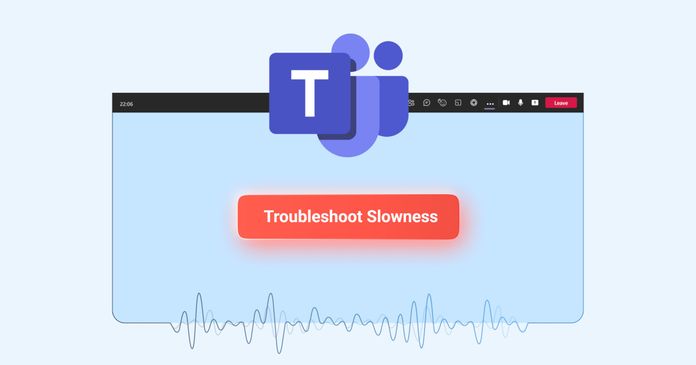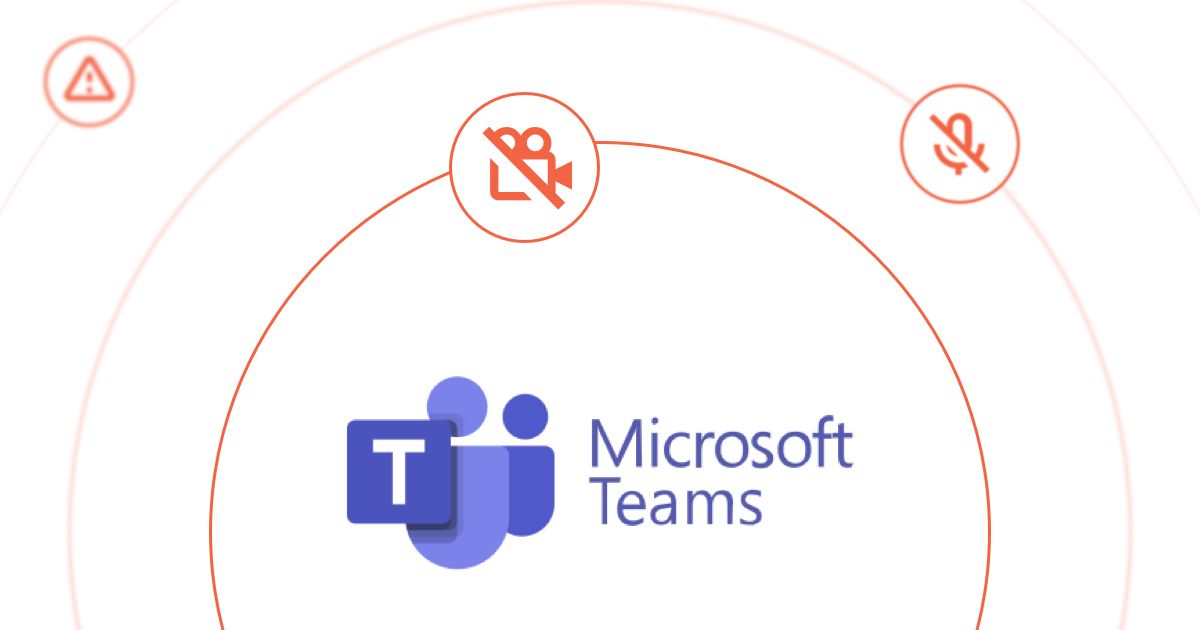Table of Contents
Table of Contents
Microsoft Teams has become essential for business collaboration, but its performance is only as good as the network supporting it. When Teams calls drop, video freezes, or messages lag, the issue rarely lies with Microsoft's platform, it's almost always the network.
The Reality of Teams Performance Issues:
75% of Microsoft Teams issues stem from network problems, not Microsoft's infrastructure. Yet most organizations don't discover these problems until after deployment, when users are already frustrated and productivity suffers.
Two Critical Use Cases for Teams Network Assessments:
Pre-Deployment Validation: Before migrating to Teams or expanding usage, assessments verify your network can handle the additional load. They identify bandwidth constraints, latency issues, QoS gaps, and infrastructure limitations—allowing you to fix problems before they impact users.
Production Troubleshooting: When users complain about Teams performance, assessments pinpoint the root cause. Is it insufficient bandwidth? High packet loss? CPU constraints? ISP problems? Assessments provide evidence-based answers instead of guesswork.
The Assessment Challenge: Traditional network assessments focus on generic metrics like bandwidth and latency. But these don't reveal how Teams will actually perform. You need to test Teams-specific functionality: call quality, MOS scores, audio/video performance under real-world conditions.
Manual testing with actual users is disruptive and provides limited data. Microsoft's native assessment tools offer basic connectivity checks but lack comprehensive troubleshooting capabilities. What's needed is a solution that continuously tests Teams performance without impacting production work.
That's why this article will teach you:
- What makes an effective Microsoft Teams network assessment
- Key metrics and requirements for Teams performance
- How to identify common issues (bandwidth saturation, high CPU, ISP problems)
- Network optimization for Teams (QoS, bandwidth planning, configuration)
- Transitioning from one-time assessment to continuous monitoring
Whether you're validating readiness for Teams deployment or diagnosing existing performance issues, this guide provides the framework for conducting comprehensive assessments that deliver actionable insights.
A Microsoft Teams Network Assessment is an integral part of a complete network assessment, offering a focused examination of your network's readiness to support the Microsoft Teams platform as well as assessing ongoing Microsoft Teams performance on an everyday basis It delves deep into your enterprise network performance, analyzing key metrics like latency, jitter, and MOS score, which significantly impact MS Teams call quality.
As part of this comprehensive audit, businesses can use specialized monitoring tools to monitor every aspect of their network, from WAN to LAN, to identify if and how network performance is affecting Microsoft Teams.
The ultimate goal is to uncover potential risks, highlight anomalies, and gather essential data to evaluate your network's performance and identify areas for improvement.
Planning a migration to Microsoft Teams marks a significant shift in an organization's communication and collaboration strategy. With MS Teams offering a comprehensive suite of telephony features, including voice calling and conferencing, the migration presents both opportunities and challenges.
Companies taking this transition need to ensure that their enterprise network infrastructure can support the increased demands of Teams' telephony services, as well as the influx of users making video and voice calls in the network. A network assessment provides valuable insights into the current state of the network, highlighting areas that may require optimization or upgrades to accommodate the new Microsoft Teams service.
Moreover, many organizations face the challenge of addressing user complaints about Microsoft Teams' performance. From dropped calls to video lagging, these issues can disrupt workflows and hinder productivity. A network assessment is the best way to find the root cause of these performance issues, whether they arise from network congestion, latency, packet loss, or issues in the ISP network
Microsoft Teams stands as one of the top choices for video conferencing, making it likely that you'll encounter connectivity and user experience issues at some point during the millions of MS Teams calls made by Teams users.
When things go wrong with Microsoft Teams, many people tend to blame Microsoft. However, in reality, about 99% of the time, the issue isn’t caused by Microsoft's services. Instead, problems with Microsoft Teams or any other Unified Communications (UC) app often indicate a larger issue within the network itself.

The quality of user experience can be influenced by various factors, including:
- Network layer (WiFi, WAN, LAN, ISP, Microsoft Teams Cloud)
- End-user device CPU and memory
- Microsoft Teams backend server performance
Whether you're conducting a pre-deployment assessment or monitoring Teams performance in production, Obkio's specialized Microsoft Teams Monitoring feature provides the visibility you need.
For Network Assessments: Deploy Obkio's Microsoft Teams Monitoring during your assessment period (typically 1-2 weeks) to gather comprehensive baseline data:
- Automated Teams performance testing without requiring actual user calls
- Real-world Teams metrics: MOS scores, call quality, audio/video performance
- Three-perspective analysis: user devices, network infrastructure, Microsoft platform
- Historical data showing performance patterns during peak and off-peak times
- Identification of bandwidth constraints, latency issues, and packet loss affecting Teams
- Evidence-based assessment reports with actual Teams performance data

Unlike manual testing or generic network monitoring, Obkio's Microsoft Teams Monitoring actually simulates real Teams usage. Every minute, our Monitoring Agents:
- Join actual Microsoft Teams meetings
- Exchange synthetic audio and video data for 35 seconds
- Measure Teams-specific performance from three perspectives simultaneously
- Connect to Microsoft's API for detailed call quality reports
- Repeat continuously to build comprehensive performance baselines
Three-Perspective Teams Monitoring:
User Environment Monitoring: Tracks CPU, memory, and device performance affecting Teams on user workstations—revealing if devices have adequate resources for Teams deployment.
Network Performance Monitoring: Measures latency, jitter, packet loss, and bandwidth across the entire path to Microsoft's infrastructure—identifying network bottlenecks before deployment.
Microsoft Platform Monitoring: Connects to Microsoft's API to gather Teams-specific data including MOS scores, audio/video quality metrics, and resolution changes—showing actual Teams call quality.
Complete Microsoft Teams Call Path Coverage:
This approach monitors 99% of the Teams call path, from user devices through your network, ISP, and into Microsoft's Azure infrastructure.
- During Assessment: Gather 1-2 weeks of baseline Teams performance data to validate readiness
- Post-Deployment: Keep monitoring enabled for continuous 24/7 Teams performance tracking
The same feature that powers your assessment continues monitoring Teams performance once deployed—detecting issues before users complain and providing ongoing optimization insights.


When it comes to evaluating network performance for Microsoft Teams calls, you have two primary options: utilizing a dedicated network assessment tool or leveraging Microsoft's own Teams assessment tool.
The Microsoft Teams Network Assessment Tool provides the ability to perform a simple test of network performance and connectivity specifically tailored for Teams calls. This tool evaluates the connection to various Teams servers deployed in the Microsoft Azure network, assessing both network performance and connectivity.
In terms of network performance, the tool conducts tests by streaming packets to the nearest edge site and back for a configurable amount of time. It collects and outputs metrics such as loss, jitter, and round-trip time, which are essential for determining if the network meets the media quality and performance targets outlined by Microsoft.
Additionally, it verifies network connectivity, ensuring that network elements between the test location and the Microsoft Network are correctly configured to enable communication to the required IP addresses and ports for Teams calls.
The portal provides Microsoft Teams metrics on the quality of Teams calls, but the sheer volume of data can be overwhelming, especially for those who aren't network specialists. While these monitoring features offer valuable insights, they lack robust analysis and troubleshooting capabilities. As a result, users may struggle to interpret the data effectively and identify the root cause of any issues affecting Microsoft Teams performance.
Elevate Teams performance with Microsoft Teams monitoring. Discover how to optimize Microsoft Teams performance & identify Teams performance issues.
Learn more

On the other hand, a dedicated network assessment tool like Obkio offers a broader range of functionalities beyond just assessing Teams calls. While the native Microsoft Teams Network Assessment Tool focuses solely on Teams-related metrics and performance, Obkio provides comprehensive network performance monitoring (NPM) features. This includes assessing network performance for all applications and services, not just Microsoft Teams, and offers advanced features for issue troubleshooting and data analysis.
This is extremely important since, as we mentioned earlier, most Microsoft Teams issues are just a symptom of larger network issues and are usually not related to Microsoft Teams at all. So, in order to identify these network issues, you need a tool that monitors complete network performance.
The biggest difference with Obkio lies in its comprehensive troubleshooting capabilities compared to the native MS Teams assessment tool. With features like Obkio Vision, a traceroute tool, proactive alerts with customizable thresholds, and intuitive dashboards and graphs, Obkio empowers users to quickly identify the root cause of network issues.
This proactive approach enables efficient troubleshooting, allowing IT pros to resolve issues in a matter of minutes, minimizing downtime and ensuring optimal network performance.
Embarking on a comprehensive MS Teams network assessment is a pivotal step toward ensuring smooth operations and maximizing productivity within your enterprise. This process entails more than just diagnosing existing issues; it serves as a strategic roadmap for fortifying network resilience, optimizing resource allocation, and enhancing user experience.

Are you ready to uncover the intricacies of your network's readiness for Microsoft Teams and optimize your Unified Communications (UC) capabilities? Dive into our comprehensive Microsoft Teams assessment questionnaire to gain insights into your network's current state and pinpoint areas for improvement, ensuring seamless collaboration and communication experiences for your organization.
1. Network Purpose:
- What is the main purpose of your network, particularly concerning Unified Communications and VoIP services?
- Can you identify the critical UC and VoIP applications running on the network?
- List all ongoing projects, future upgrades, rollouts, and planned network expansions.
2. Network Users:
- How many users (both internal and external) currently utilize UC and VoIP services on the network?
- What roles and responsibilities do these users hold within the organization?
- Define users' activities, hours of use, and types of access (Internet, remote, dial-in, VPN, etc.).
3. Network Devices:
- Identify types (Routers, Switches, Firewalls, Hubs, Gateways) and brands (Cisco, Juniper, HP, etc.) of network devices supporting UC and VoIP services.
- What are the locations of these devices (Data Center, Network Closet, On-premises)?
4. Network Infrastructure Assessment:
- Outline the network topology specifically related to UC and VoIP services.
- Identify network types (WAN, LAN, Wireless) and locations (Headquarters, Branch Offices, Remote Sites).
- How are devices interconnected within the network?
5. Network Bandwidth:
- What is the current bandwidth allocated and utilized for UC and VoIP traffic on your network?
- Identify the maximum bandwidth required by UC and VoIP services to ensure optimal performance.
6. Network Traffic Load:
- What's the average and peak traffic load specifically attributed to UC and VoIP services on your network?
7. Network Servers:
- How many servers are dedicated to supporting UC and VoIP services?
- Specify the roles and functions of these servers.
8. Network Storage Capacity:
- Define the current storage capacity in your network.
- What types of data are stored within this allocated storage for UC and VoIP services?
9. Network Backup and Recovery:
- Share details of your current backup and disaster recovery plan specifically tailored for UC and VoIP services.
- How frequently are backups executed?
10. Network Security Measures:
- List existing security measures specifically implemented to safeguard UC and VoIP communications.
- What's the protocol for handling security incidents and breaches?
11. Network Uptime:
- What's the current network uptime percentage for UC and VoIP services?
- Determine the most common causes of network downtime affecting UC and VoIP services and how these issues are resolved.
12. Network Performance Metrics:
- What are the key metrics for measuring network performance specifically related to UC and VoIP services?
- How often are these metrics monitored using tools like Network Performance Monitoring, Ping, Traceroutes, and Bandwidth tests?
13. Network Maintenance and Upgrades:
- What plans are in place for maintenance and upgrades (both hardware and software) to support UC and VoIP services?
- What's the expected lifespan of your network components?
14. Network Policies and Procedures:
- Provide insights into current network policies (Security, Usage, and Access Control Policies).
- How are these policies enforced to ensure secure and efficient communications?
- List all internal and external SLAs specifically related to UC and VoIP services.
15. Network Access and Permissions:
- How are network access and user permissions managed?
- Detail the authentication and authorization mechanisms in place to secure UC and VoIP communications.
16. Network Costs:
- Break down the current costs tied to network operations, maintenance, and upgrades.
- How do these costs stack up against industry standards and best practices for UC deployments?
Conducting a comprehensive Microsoft Teams network assessment requires more than manual testing and theoretical calculations. You need a tool that provides real Teams performance data, not just network metrics.
Obkio's specialized Microsoft Teams Monitoring feature is designed specifically for conducting thorough Teams network assessments by simulating actual Teams usage.

Automated Teams Performance Testing: Rather than manually testing with actual users, Obkio's Monitoring Agents join Teams meetings every minute and exchange synthetic audio/video data. This provides continuous Teams performance data throughout your 1-2 week assessment period—without disrupting actual work.
Three-Perspective Analysis: Assess Teams readiness from three critical angles:
- User Devices: CPU, memory, and hardware adequacy for Teams
- Network Infrastructure: Latency, jitter, packet loss affecting Teams traffic
- Microsoft Platform: Actual call quality metrics from Microsoft's API
Complete Call Path Coverage: Monitor 99% of the Teams call path from user workstations through your network, ISP, and into Microsoft's Azure infrastructure—identifying bottlenecks anywhere along the route.
Microsoft Teams-Specific Metrics: Gather the metrics that actually matter for Teams performance:
- MOS scores indicating expected call quality
- Audio/video quality measurements
- Bandwidth consumption patterns
- Call setup times and connection reliability
- Resolution changes under varying conditions
Baseline Performance Data: Build comprehensive performance baselines over your assessment period showing:
- Peak vs. off-peak performance patterns
- Location-specific Teams performance variations
- Network capacity during simulated load
- Historical trends revealing intermittent issues
Dive into Obkio's free trial, where you can conduct a no-obligation network assessment (POC).
It's your chance to swiftly determine if your network is causing headaches and gather the insights needed to troubleshoot MS Teams network issues effectively.

Now, let's delve into the practical steps of assessing your network, equipping you with the tools and insights needed to understand its intricacies.
3.1. Network Monitoring
Network monitoring is crucial for assessing its health, involving continuous surveillance of network traffic, system performance, and overall well-being. The primary goals are to identify potential MS Teams issues and collect data for in-depth analysis and improvement.
Unveiling Network Monitoring Techniques:
Synthetic Monitoring: This proactive method simulates user activity with network resources to assess performance and identify issues. Using Obkio’s network monitoring agents, synthetic monitoring offers an authentic end-user perspective.
Packet Sniffing: Capturing and analyzing data packets in real-time provides insights into performance, security, and user behaviour.
Network Flow Analysis: Gathering data on traffic patterns helps identify trends and irregularities, aiding in recognizing congestion and security threats.
Network Device Monitoring: Monitoring critical network devices is crucial for MS Teams performance. Tools like Obkio's Network Device Monitoring feature, utilizing SNMP monitoring, monitor parameters like CPU usage, bandwidth, and errors to swiftly detect anomalies.
Event Log Analysis: Scrutinizing system and application logs detect potential issues and security threats, such as unauthorized access attempts or malware infections.
3.2. Historical Data Analysis
Analyzing historical performance data is crucial for a comprehensive assessment. Scrutinizing performance data over time provides context and allows for the establishment of performance baselines.
Key Aspects of Historical Data Analysis:
- Baseline Establishment: Historical trends help establish performance baselines, allowing for the identification of patterns, anomalies, and potential bottlenecks.
- Proactive Troubleshooting: Understanding past network behaviour enables proactive identification and resolution of issues before they escalate, enhancing network management efficiency.
In summary, historical data analysis transforms network assessment into a dynamic process, providing insights that extend beyond the present moment and into the network's performance history.
3.3. Key Network Metrics for MS Teams Monitoring
After analyzing historical data, it's time to focus on real-time MS Teams monitoring of key network metrics. These metrics act as vital indicators of your network's health, guiding you through its complexities and ensuring optimal performance.
Key Metrics for MS Teams Network Assessment:
- Jitter: Measures latency variation over time, critical for real-time applications. Monitoring jitter helps identify areas of inconsistency and enables corrective actions.
- Packet Loss: Quantifies the percentage of lost packets during transmission, indicating potential issues like network congestion or hardware malfunctions.
- Latency: Assesses the delay in data packet transmission, crucial for applications like video conferencing and VoIP (VoIP latency). Monitoring Microsoft Teams latency reveals areas of delay for performance optimization.
- Network Throughput: Quantifies data transfer efficiency, indicating network infrastructure limitations.
- Bandwidth: Measures available network capacity, crucial for identifying bottlenecks or limitations.

- VoIP Quality: Evaluates voice communication clarity, reliability, and consistency. Monitoring factors like MOS, SNR, delay, and packet loss ensures optimal VoIP performance.
- Error Rates: Measures data transmission errors, revealing issues with network components or environmental factors.
- Quality of Service (QoS): Assesses network performance for specific applications or services, ensuring required performance levels.
- Network Utilization: Monitors network capacity usage to identify peak periods and potential bottlenecks.
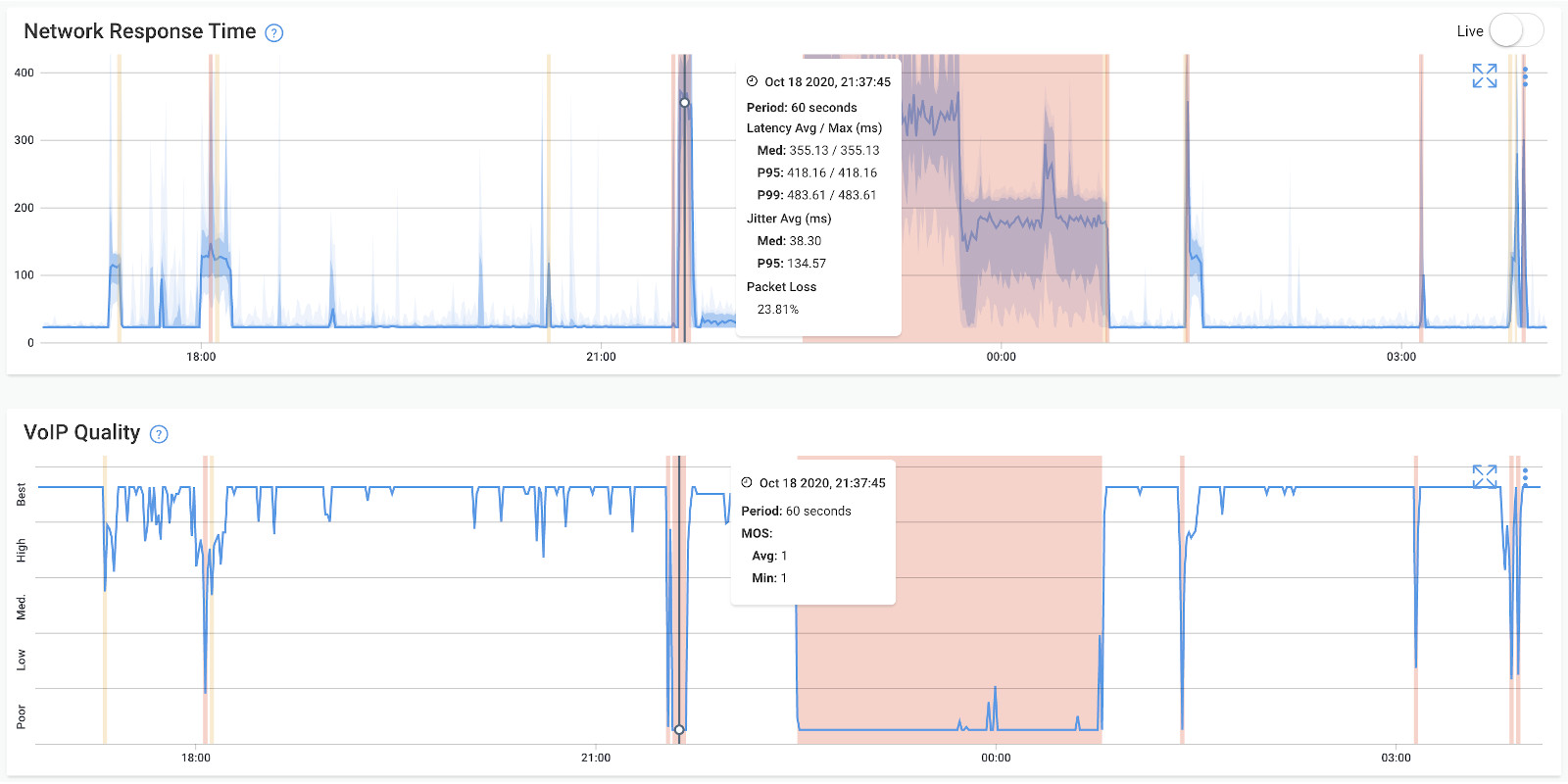
Obkio provides real-time metric updates, offering insights like a traffic control tower for your network. With proactive metric measurements, Obkio ensures potential issues are not overlooked, providing a comprehensive view of network health.
3.4. Network Topology Mapping
Network mapping is a valuable technique for visualizing network components and connections. It offers a clear overview of the network's structure, aiding in identifying vulnerabilities and performance bottlenecks.
- Manual Mapping: Involves physical inspection and documentation of network elements and connections. While thorough, it can be time-intensive and prone to errors.
Once the network map is created, administrators leverage it to pinpoint issues, optimize resources, and enhance network efficiency. It serves as a strategic compass, guiding administrators through network complexities for better management and optimization.
3.5. MS Teams Traffic Analysis
Understanding network traffic is crucial for ensuring seamless communication and collaboration. Traffic analysis delves into the study of network traffic, aiming to comprehend data flow, identify bottlenecks, and detect anomalies or security threats within the MS Teams environment.
- Protocol Analysis: Examines network traffic to understand protocols like TCP/IP, HTTP, and RTP used by MS Teams. By scrutinizing protocol headers and payloads, administrators can optimize network performance and detect any misconfigurations or malfunctions.
- Network Packet Analysis: This involves capturing and analyzing individual data packets to gain insights into network behaviour, performance, and security. This approach aids in identifying unauthorized access attempts, malware infections, and other security incidents affecting MS Teams communication.
- Flow Analysis: Monitors traffic patterns to detect network congestion, performance issues, or anomalies impacting MS Teams usage. Analyzing data transfer volume and frequency helps optimize network resources for smooth MS Teams operation.
3.6. MS Teams Vulnerability Scanning
Vulnerability scanning is a critical aspect of MS Teams monitoring, aimed at identifying potential vulnerabilities within network devices, systems, and applications. By proactively pinpointing security threats, administrators can safeguard MS Teams communication and collaboration from potential exploits.
- Automated Vulnerability Scanning: Using automated tools, admins scan network devices, systems, and applications for known vulnerabilities. These tools leverage a comprehensive database of vulnerabilities to oversee MS Teams infrastructure, including routers, network switches, firewalls, servers, and software applications.
- Reporting and Mitigation: Upon completion, vulnerability scanning tools generate detailed reports highlighting potential vulnerabilities and offering recommendations for mitigation. Armed with this information, admins can prioritize and strategize remediation efforts based on the severity of vulnerabilities, ensuring robust security measures for MS Teams.
3.7. MS Teams Performance Testing
Performance testing plays a crucial role in optimizing MS Teams usage and evaluating the network's capabilities under various conditions to ensure reliable communication and collaboration.
- Load Testing: Simulates heavy traffic scenarios to assess MS Teams' performance under peak usage. Identifying bottlenecks helps optimize network resources for smooth MS Teams operation.
- Stress Testing: Evaluates MS Teams' resilience under extreme conditions, such as sudden spikes in traffic or potential DoS attacks. By subjecting the network to stress, administrators can prepare for potential security incidents effectively.
- Bandwidth Testing: Measures available bandwidth and identifies congestion points to optimize network performance for MS Teams usage.
Performance testing can be conducted manually or using automated tools, providing insights into MS Teams' responsiveness, throughput, and reliability. Comprehensive reports generated by these tools aid administrators in optimizing network performance for seamless MS Teams communication and collaboration.
In this final phase of the MS Teams network assessment, we compile a comprehensive report that encapsulates the analysis, findings, and recommendations. The aim is to provide stakeholders with a detailed overview of the network's current state, including hardware and software components, performance metrics, security measures, and proposed enhancements.
Categorizing Recommendations:
To streamline the implementation process, recommendations are categorized into three groups based on priority or severity levels:
- Hardware Changes
- Software Changes
- Security Changes
Prioritizing recommendations ensures that critical concerns are promptly addressed, enhancing the efficiency of the network assessment efforts.
Utilizing Obkio's Data:
Leveraging the data collected through Obkio's application, the MS Teams network assessment concludes with the generation of Network Performance Reports. Report Schedules automate the execution and generation of reports on a daily, weekly, or monthly basis, offering an executive summary of the network's performance health and highlighting any identified issues.
Key Features of Network Performance Reports:
- Accessible Data: The reports present specific network performance data in an easy-to-understand and shared format.
- Internal Data Sharing: Teams can utilize the reports internally to gain actionable insights and make informed decisions following the network assessment.
- External Data Sharing: When engaging with Service Providers to resolve network issues, comprehensive reports serve as valuable resources, providing detailed information for swift escalation beyond Level 1 Support.
- Informed Decision-Making: The reports draw from current and historical network performance data, facilitating quick and informed decisions concerning network optimization and health.
- Proactive Network Optimization: By scrutinizing reports and observing capacity usage trends, potential network issues can be forecasted, detected, diagnosed, and troubleshooted before they escalate into complete network outages.
- SLA Agreement Monitoring: The network assessment template plays a crucial role in monitoring compliance with SLAs. The gathered information can demonstrate adherence to service-level agreements or provide evidence to Service Providers if they are not complying with agreed-upon SLAs.
By compiling and sharing these comprehensive reports, stakeholders gain insights into the MS Teams network's performance, enabling proactive measures to optimize network functionality and ensure seamless communication and collaboration experiences.
Learn how to monitor Microsoft Teams performance & connection issues like Microsoft Teams “We’re sorry - we’ve run into an issue” & “something went wrong.”
Learn more

If your business is planning to deploy Microsoft Teams company-wide, then you need to make sure that your business’ network is ready. A crucial part of a Microsoft Teams network assessment is determining the Team’s network requirements and configurations.
Here are some steps you may want to consider to optimize your network and ensure smooth performance when using Microsoft Teams, following the best practices outlined by MS Teams for planning and configuring network settings
1. External Name Resolution: Ensure that all computers running the Teams client can resolve external DNS queries to discover the services provided by Microsoft 365 or Office 365. Check firewall configurations to prevent any access issues.
2. Maintain Session Persistence: Verify that your firewall settings do not change the mapped Network Address Translation (NAT) addresses or ports for UDP. This ensures consistent communication between devices and prevents disruptions.
3. Validate NAT Pool Size: Confirm that the network address translation (NAT) pool size is adequate for user connectivity. Prevent port exhaustion by assigning sufficient public IP addresses to NAT pools, ensuring smooth access to Microsoft 365 or Office 365 services.
4. Routing to Microsoft Data Centers: Implement efficient routing to Microsoft data centers. Identify locations that can use local or regional egress points for optimal connectivity to the Microsoft network.
5. Intrusion Detection and Prevention Guidance: If your network has an Intrusion Detection or Prevention System (IDS/IPS), ensure that all Microsoft 365 or Office 365 URLs are allowed to prevent any security-related issues.
6. Configure Split-Tunnel VPN: Consider implementing a split-tunnel VPN to provide an alternate path for Teams traffic, bypassing the VPN. This approach enhances Teams quality, reduces VPN device load, and minimizes network load.
Other reasons why MS Teams recommend bypassing the VPN:
- Real-time media support is not often supported by VPN configurations or architecture.
- It is possible that certain VPNs might not support UDP, which is necessary for Teams.
- Additionally, media transmission that has already been encrypted is further encrypted by VPNs.
- Hairpin traffic across a VPN device may cause connectivity to Teams to be inefficient.
7. Optimize WiFi: Plan and optimize your WiFi network to support Teams effectively. Implement QoS or WiFi Multimedia (WMM) to prioritize media traffic, optimize WiFi bands and access point placement, and consider band steering for dual-band networks.
Optimize WiFi by strategically placing access points and selecting the appropriate frequency bands. The 2.4 GHz range may suffice, but it's prone to interference from other devices. The 5 GHz range is better for real-time media but requires more access points for coverage. Consider implementing band steering for dual-band networks to encourage devices to use the 5 GHz range. Avoid signal overlap by placing access points on non-overlapping channels to prevent competition and ensure a better user experience.
8. Allow WebSocket Protocol: Enable WebSocket traffic to facilitate efficient delivery of chat updates, call notifications, and other real-time notifications from cloud services to the Teams client. This enhances performance and reduces bandwidth usage compared to traditional HTTP long-polling transport.
These recommendations can help optimize your network and enhance Teams performance, particularly if you encounter any network limitations.
Consider additional network optimization if:
- Teams performance is sluggish, which could indicate insufficient bandwidth.
- Calls frequently drop, possibly due to firewall or proxy blockers.
- Calls experience static, voice distortion, or robotic sounds, indicating potential issues with jitter or packet loss.
Microsoft Teams is engineered to deliver top-notch audio, video, and content sharing regardless of network conditions. However, in situations where bandwidth is limited, Teams prioritize audio quality over video quality.
Under optimal bandwidth conditions, Teams enhances media quality, supporting high-fidelity audio, up to 1080p video resolution, and up to 30 frames per second (fps) for video and content.
The bandwidth requirements are categorized into Minimum, Recommended, and Best Performance, with considerations for each endpoint usage. Each user typically corresponds to one endpoint, such as a computer or mobile device. However, if a user joins a Teams meeting on both a computer and a mobile device, two endpoints are associated with that user.
- Minimum bandwidth requirements for video calls include up to 240p resolution, adaptive screen sharing content frame rates ranging from 1.875 to 7.5fps, and video resolution up to 540p for Together Mode/Large Gallery.
- Recommended bandwidth requirements for video calls support up to 1080p resolution, adaptive screen sharing content frame rates ranging from 7.5 to 30fps, and up to 1080p resolution for Together Mode/Large Gallery.
- Best Performance Guidance offers even higher fidelity video for larger attendee meetings, environments with high packet loss, and content with higher motion. Screen-sharing content frame rates are adaptive, ranging from 15 to 30fps.
While up to 1080p quality is possible, actual video resolution and quality may vary based on network conditions as optimization is applied accordingly.
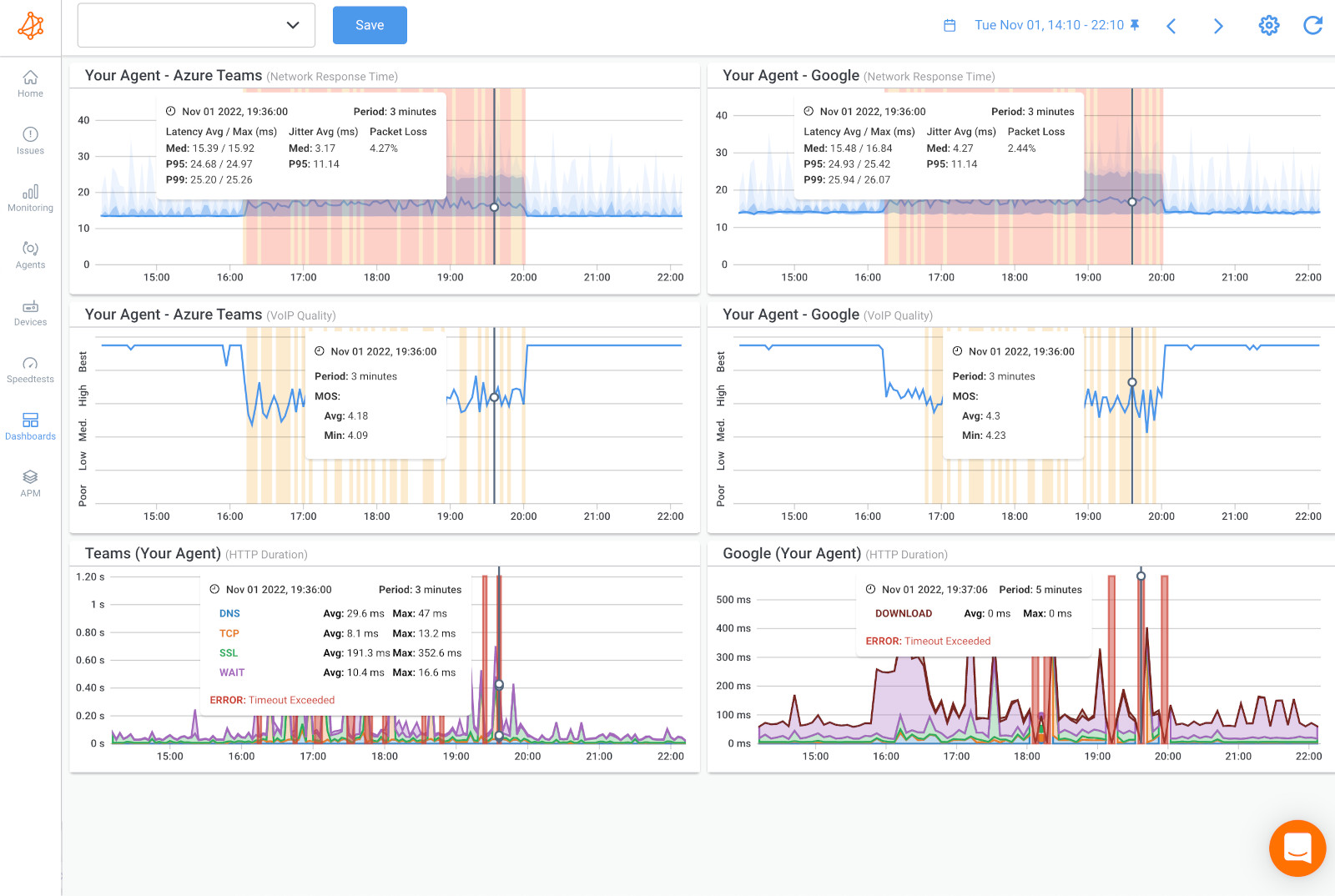
Quality of Service (QoS) plays a vital role in ensuring optimal network performance for Microsoft Teams, especially for real-time network traffic like voice or video streams. QoS essentially allows sensitive traffic to "cut in line" ahead of less critical data, ensuring a smooth user experience.
Without QoS, issues such as jitter, packet loss, and delayed round trip time (RTT) can occur, leading to poor voice and video quality during Teams calls. When network traffic enters a router without QoS configuration, it's treated as first-in, first-out, regardless of priority. This means that voice traffic, which requires minimal delays, may get stuck behind less sensitive data.

Implementing QoS involves creating multiple queues using congestion management features, similar to virtual "carpool lanes" in your network. This allows sensitive traffic to bypass delays, optimizing bandwidth usage while delivering reliable performance for users.
To implement QoS effectively:
1. Verify network readiness: Ensure that network devices can classify traffic and distinguish voice or video streams from other data.
2. Select the desired implementation method: Options include Access Control Lists (ACLs) or Group Policy Objects (GPOs) to direct client devices to insert a Differentiated Services Code Point (DSCP) marker in IP packet headers.
3. Choose initial port ranges for each media type: Define port ranges for voice and video traffic to prioritize them accordingly.
4. Implement QoS settings: Configure routers, client devices, and Teams Admin center settings to recognize and prioritize real-time traffic.
5. Validate QoS implementation: Analyze Teams traffic on the network to ensure that QoS settings are functioning as expected.
It's important to note that QoS only works effectively when implemented on all links between callers. Additionally, while VPNs can provide a managed connection for remote locations, they may introduce packet overhead and delays, so it's advisable to avoid routing real-time communications traffic over VPNs.
In selecting a QoS implementation method, consider factors such as network infrastructure, device compatibility, and ease of management. Combining methods like ACLs and GPOs can provide comprehensive QoS coverage for diverse client environments.
Ultimately, proper QoS configuration is essential for maintaining high-quality voice and video experiences in Microsoft Teams, aligning application performance with underlying network capabilities.
Various issues can impact the performance of Microsoft Teams, but some occur more frequently than others. And, as we mentioned earlier, most Microsoft Teams performance and connection issues are actually caused by network issues.
The majority of Microsoft Teams issues often stem from network connectivity issues, particularly in the final stretch of SD-WAN networks, commonly referred to as the "last mile." These issues typically arise within the Local Loop or at the customer Edge Router.
Here, we'll highlight the three most common issues affecting Microsoft Teams performance, accompanied by real-world examples and visualizations using Obkio's Network Monitoring Software. We'll focus on the scenarios occurring in Branches #1, #2, and #3, as shown in the Chord Diagram below.
By leveraging tools like Obkio, organizations can swiftly identify and visualize these issues, enabling proactive troubleshooting and timely alerts to address them effectively.
One prevalent issue affecting the performance of Microsoft Teams is high CPU usage on the device running the Microsoft Teams application. This device is typically a computer, laptop, or mobile device where Teams is installed and actively used for communication, collaboration, and meetings. When this device's CPU usage is high, it can impact the performance of Teams and lead to various issues as mentioned earlier.
When a computer's CPU is under heavy load, it can result in performance degradation, resource competition, thermal throttling, and interference from background processes. These factors collectively contribute to slow response times, laggy audio/video calls, delays in message delivery, and overall sluggishness within the Teams application.
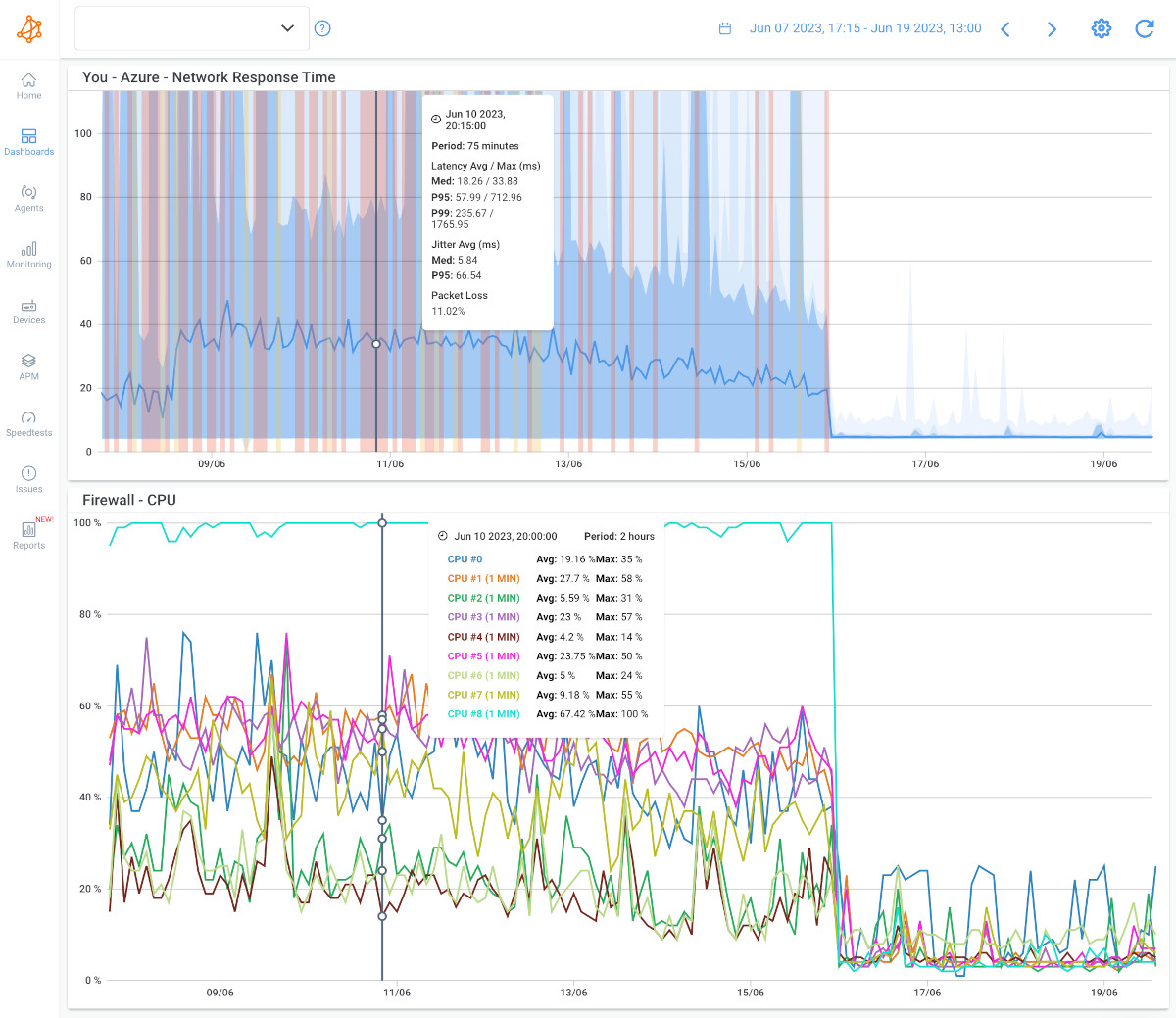
- Performance Degradation: When a computer's CPU is running at high utilization, it can lead to overall system performance degradation. This can manifest in Teams as slow response times, laggy video calls, or delays in message sending and receiving.
- Resource Competition: High CPU usage means that the CPU is busy processing tasks. If Teams requires CPU resources for tasks like audio/video processing, screen sharing, or application rendering, it may struggle to get the necessary resources when the CPU is heavily utilized by other applications or processes.
- Heat Generation: Intense CPU usage generates heat, which can lead to thermal throttling. Thermal throttling occurs when the CPU reduces its clock speed to prevent overheating, resulting in reduced performance. This can affect Teams' ability to handle tasks efficiently.
- Background Processes: Some background processes or tasks on the computer may consume CPU resources, impacting Teams' performance. For example, antivirus scans, software updates, or resource-intensive applications running in the background can increase CPU usage and affect Teams' responsiveness.
To illustrate, let's examine an Obkio Dashboard for a specific branch, as shown in the screenshot above, displaying performance graphs over the last 8 hours.
Upon reviewing the dashboard, it becomes evident that there is poor performance caused by high packet loss sequences affecting all traffic passing through the network. Additionally, both ISP #1 and ISP #2 are experiencing performance issues.
Analyzing further, we can see that the CPU usage on the firewall is at 100% during the same period when performance issues occur. This indicates that significant traffic is being sent to that port, potentially from a different application, impacting the CPU's capacity to process packets in real-time.
Furthermore, when ISP #1 and ISP #2 encounter performance issues, the quality of Zoom and Microsoft Teams calls is also affected due to high packet loss resulting from CPU overload.
Several factors contribute to high CPU usage on network devices:
1. Network Traffic Volume: High CPU consumption may result if the amount of network traffic flowing through the network device is greater than its processing capabilities. This kind of scenario usually arises when there is an abrupt increase in network traffic or when the device is operating at a higher capacity than it was intended to.
2. Complex Routing and Policy Configurations: To maximize network traffic, network devices rely on intricate policy setups and routing algorithms. CPU utilization may rise if these configurations are too complicated or contain mistakes, which would make it difficult for the device to process and route packets effectively.
3. Security Processing: Security features like encryption, firewalling, and deep packet inspection are frequently included in network devices. CPU utilization may rise dramatically as a result of the extra processing needed for these security features, particularly in cases where there is a lot of encrypted traffic or complicated security rules.
4. Firmware or Software Issues: Increased CPU consumption may be caused by bugs, glitches, or compatibility problems in the firmware or software that is operating on the SD-WAN device. Software updates, configuration modifications, or inherent flaws in the device's operating system could be the source of these problems.
In this case, the Microsoft Teams connection issue is local to the device and is not related to the network of your ISP. You must therefore troubleshoot.
- Examine the device logs to see what process was active at this particular moment.
- Find the device's software bugs.
- Check to see whether there has been a recent software update, then go back to a previous version of the program.
- Update the firmware on your device.
- To determine whether high CPU and high bandwidth utilization are occurring at the same time, look into Network Device Monitoring (not in this instance).
- If excessive bandwidth use is the reason, review the firewall logs to determine whether or not your traffic is authorized.
- Organize your firewall's priorities to give particular traffic priority.
- Invest in a larger device.
- Close unnecessary applications and background processes to free up CPU resources.
- Ensure that their computer meets the minimum system requirements for running Teams smoothly.
- Monitor CPU usage regularly and investigate any spikes or sustained high usage that may indicate underlying issues.
- Update Teams and related software to the latest versions, as updates often include performance improvements and bug fixes.
- Consider upgrading hardware (e.g., CPU, RAM) if high CPU usage is a persistent issue that significantly impacts Teams' performance.
To address high CPU usage on devices running Microsoft Teams, consider the following steps:
1. Capacity Planning: Evaluate network traffic load and ensure the device has sufficient resources. 2. Simplify Configurations: Review and optimize routing and policy configurations to reduce processing overhead. 3. Offload Processing: Consider offloading resource-intensive tasks to dedicated hardware. 4. Update Firmware and Software: Keep the device's firmware and software up to date to address bugs and enhance performance.
By proactively monitoring network performance with tools like Obkio, organizations can swiftly identify and resolve high CPU usage issues, ensuring optimal Microsoft Teams performance across the network.
High bandwidth usage plays a crucial role in the smooth functioning of Microsoft Teams, a platform heavily reliant on network resources for seamless communication and collaboration. However, excessive bandwidth consumption can lead to a range of issues, including network congestion, Quality of Service (QoS) issues, limited bandwidth availability, and competition from background processes.
High bandwidth usage can occur on the network infrastructure that supports Microsoft Teams. This includes:
- Local Network: Within an organization, the local network infrastructure, including routers, switches, and cables, can experience high bandwidth usage if multiple users are actively using Teams for audio/video calls, screen sharing, file transfers, and other collaboration tasks.
- Internet Connection: The internet connection used by the organization or individuals accessing Teams remotely can also experience high bandwidth usage. This can happen when multiple users are simultaneously using Teams across different locations, consuming significant amounts of data for communication and collaboration activities.
- VPN Connections: In remote work scenarios where Teams traffic is routed through Virtual Private Network (VPN) connections, high bandwidth usage can occur on the VPN infrastructure. This includes VPN servers, tunnels, and the network segments through which Teams data is transmitted securely.
- Data Centers: Microsoft Teams relies on cloud-based data centers for hosting its services and data storage. High bandwidth usage can occur within these data centers, especially during peak usage periods when numerous organizations and users are accessing Teams simultaneously.
- Mobile Networks: For users accessing Teams through mobile devices, high bandwidth usage can occur on cellular networks. This can happen during video calls, file uploads/downloads, and other data-intensive activities performed through the Teams mobile app.
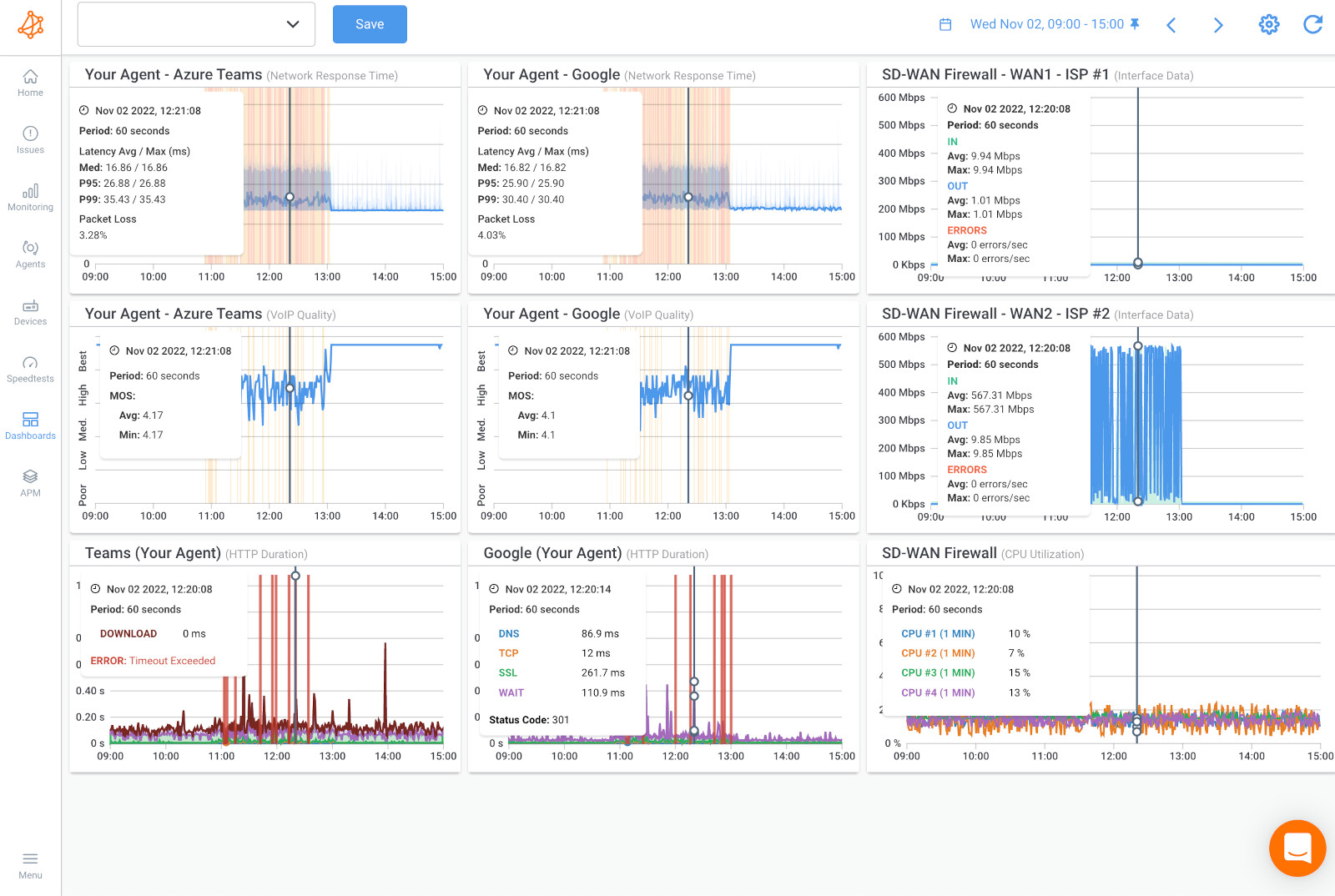
In the provided screenshot of an Obkio Dashboard for Branch #1, various performance graphs are displayed, focusing on the last 8 hours of performance data.
While ISP #1 shows stable latency and low jitter with no packet loss detected, ISP #2 has performance issues characterized by high packet loss measurements.
Analyzing the bandwidth usage on WAN Port #2, it becomes apparent that the bandwidth usage exceeds the available 500 Mbps bandwidth service during periods of high packet loss. This indicates that the high bandwidth usage is directly correlated with the observed packet loss.
Additionally, when ISP #2 experiences high packet loss, it adversely affects the quality of Zoom and Microsoft Teams calls, indicating a broader impact on network performance.
High bandwidth usage can cause issues with Microsoft Teams in several ways:
- Bandwidth Consumption: To achieve connectivity, SD-WAN deployments use a number of ISPs or transport links. One of the underlying networks in the SD-WAN infrastructure in this instance is ISP #2. Increased data transfer or network-intensive apps can cause a significant demand for bandwidth, which can overload ISP #2's available bandwidth.
- Insufficient Bandwidth Allocation: If ISP #2's bandwidth allocation is insufficient to meet the real demands of network traffic, a problem may occur. Changes in network usage patterns or poor judgment in network capacity planning may be the cause of this. Congestion and a decline in performance follow as a result of the available bandwidth becoming too little to meet the rising demand.
- Competing Traffic: On ISP #2's underlay network, competing network traffic may also be the source of the excessive bandwidth utilization problem. A large amount of the available bandwidth may be used by other users or apps that share the same network infrastructure, leaving little room for SD-WAN deployment. The rivalry for available bandwidth may lead to a decline in SD-WAN traffic throughput and performance.
- Quality of Service (QoS) Configurations: SD-WAN systems frequently use QoS techniques, such as VoIP QoS, to prioritize important applications and traffic types. However, excessive bandwidth utilization and poor SD-WAN deployment performance may result from incorrectly configured QoS settings or from conflicts in traffic prioritization criteria.
Several factors contribute to high bandwidth usage on the underlay of ISP #2 within an SD-WAN deployment:
1. Increased Network Traffic: Overall growth in network traffic due to factors such as a rising number of users or increased usage of bandwidth-intensive applications.
2. Bandwidth-Intensive Applications: Extensive use of applications like video streaming or real-time collaboration tools consuming a significant amount of bandwidth.
3. Misconfiguration of QoS Policies: Improper configuration of Quality of Service (QoS) policies leading to improper allocation of bandwidth.
4. Inadequate Capacity Planning: Insufficient capacity planning results in the allocated bandwidth being unable to meet the actual network traffic demands.
5. Competing Traffic from Other Users: Other users or applications sharing the same network infrastructure competing for available bandwidth.
Since the issue originates from a local network device, resolution lies within your organization's control:
1. Bandwidth Assessment and Capacity Planning: Evaluate actual bandwidth requirements and ensure sufficient allocation from ISP #2.
2. Traffic Prioritization and QoS Configuration: Implement proper traffic prioritization and QoS settings to allocate bandwidth appropriately.
3. Load Balancing and Traffic Steering: Utilize SD-WAN's traffic steering capabilities for effective load balancing and optimization of bandwidth utilization.
4. Network Monitoring and Optimization: Regularly monitor network traffic and performance to identify areas of high bandwidth consumption and optimize network configurations accordingly.
By taking proactive measures and leveraging tools like Obkio for real-time monitoring, organizations can effectively troubleshoot and mitigate high bandwidth usage issues, ensuring optimal performance for Microsoft Teams and other critical applications.
Discover why Microsoft Teams runs slow and learn effective strategies to identify and resolve Microsoft Teams slow performance issues for seamless calls.
Learn more

Another common issue affecting the performance of Microsoft Teams is related to Local Loop issues within the ISP's network infrastructure. These issues arise when there are specific problems with the local loop connectivity provided by the Internet Service Provider (ISP), leading to disruptions in network connectivity and performance.
The local loop, comprising network cables, equipment, and connectivity to the internet service provider (ISP), forms a critical link in ensuring seamless communication through Microsoft Teams. However, issues within this local loop, such as connection drops, latency problems, bandwidth limitations, and quality degradation, can significantly affect the performance and reliability of Teams.
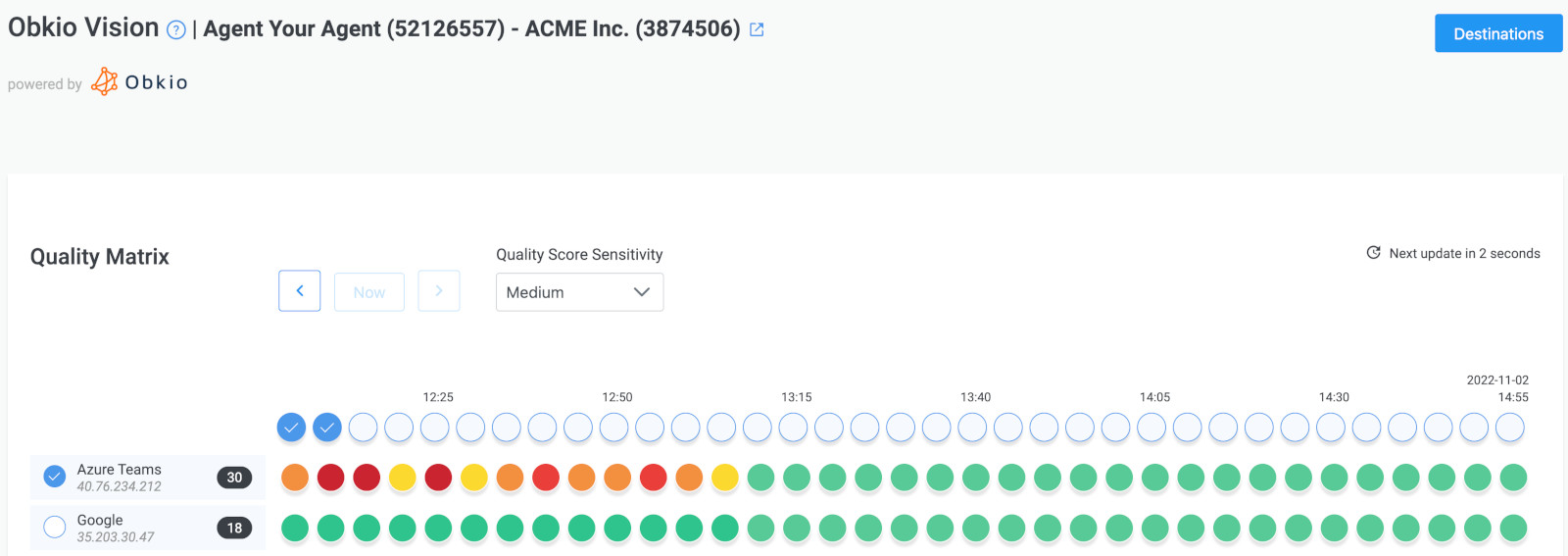
An Obkio Dashboard for Branch #2 displays various performance graphs over the last 8 hours, with Column 1 showing UDP monitoring session performance from the Branch 2 Monitoring Agent towards the SD-WAN user experience Monitoring Agents.
While ISP #1 has stable latency and low jitter with no packet loss detected, ISP #2 shows performance issues.
Analyzing SNMP Polling on the SD-WAN Edge Equipment, there is no indication of high bandwidth usage, suggesting that the issue does not stem from a lack of resources from the SD-WAN Edge router.
However, when ISP #2 experiences performance issues, it also affects the quality of Zoom and Microsoft Teams calls, indicating a broader impact on network performance.
The traceroute below shows that just ISP #2 is impacted, and it appears that the problem was introduced at the very first hop.
Several factors contribute to Local Loop issues within an SD-WAN deployment:
1. Physical Damage: Damage to the local loop infrastructure, such as cables or connectors, due to construction work, vandalism, or natural disasters.
2. Signal Interference: External interference disrupts signal quality, leading to degraded connectivity.
3. Line Degradation: Deterioration of the local loop connection over time due to wear and tear or inadequate maintenance.
4. Network Congestion: Congestion in ISP networks results in packet loss and increased latency.
5. Service Provider Maintenance: Planned or unplanned maintenance activities causing temporary service disruptions.
6. Equipment Failure: Hardware failures within the ISP's network infrastructure impacting connectivity.
7. External Factors: Severe weather conditions or accidents damaging the local loop infrastructure.
8. SLA Violations: Failure to meet agreed service levels defined in the SLA, leading to poor service quality.
Resolution of Local Loop issues lies with the ISP:
1. Contact ISP: Open a support ticket with the ISP using data acquired from Obkio's app, including screenshots of monitoring sessions, dashboards, or traceroutes.
2. Real-Time Monitoring: Utilize Live Monitoring mode for real-time updates and share results of Live Traceroutes with the ISP using a public link.
3. Data Analysis: If required, create a temporary Read-Only User in your Obkio account for the ISP to further analyze the data.
By collaborating with the ISP and leveraging monitoring tools like Obkio, organizations can speed up the resolution of Local Loop issues and ensure optimal performance for Microsoft Teams and other critical applications.
Elevate Teams performance with Microsoft Teams monitoring. Discover how to optimize Microsoft Teams performance & identify Teams performance issues.
Learn more

Microsoft Teams network assessments serve two critical purposes: validating readiness before deployment and diagnosing performance issues in production environments. With 75% of Teams issues stemming from network problems, comprehensive assessments are essential—not optional.
When you perform a detailed MS Teams assessment, you'll get:
- Baseline performance metrics across all network segments
- Identification of bandwidth, latency, or packet loss issues
- QoS configuration gaps that impact call quality
- Infrastructure limitations requiring upgrades
- Clear prioritization of remediation efforts
Beyond One-Time Assessments:
While assessments provide valuable snapshots, Teams performance changes constantly. Network conditions fluctuate, usage patterns evolve, and new issues emerge. That's where Obkio's Microsoft Teams Monitoring feature transforms assessment insights into ongoing optimization.

The Microsoft Teams Monitoring Advantage: Unlike generic network monitoring, specialized Microsoft Teams Monitoring specifically tests Teams functionality:
- Joins actual Teams meetings every minute
- Exchanges synthetic audio/video data to test real-world conditions
- Monitors from three perspectives: user devices, network infrastructure, and Microsoft's platform
- Covers 99% of the Teams call path
- Tracks Teams-specific metrics: MOS scores, call quality, audio/video performance
- Alerts you when Teams performance degrades—before users complain
This will actually help you catche Teams issues in real-time rather than discovering them during your next assessment or through frustrated user reports.
Ready to perform a comprehensive Teams network assessment and implement continuous Teams-specific monitoring?













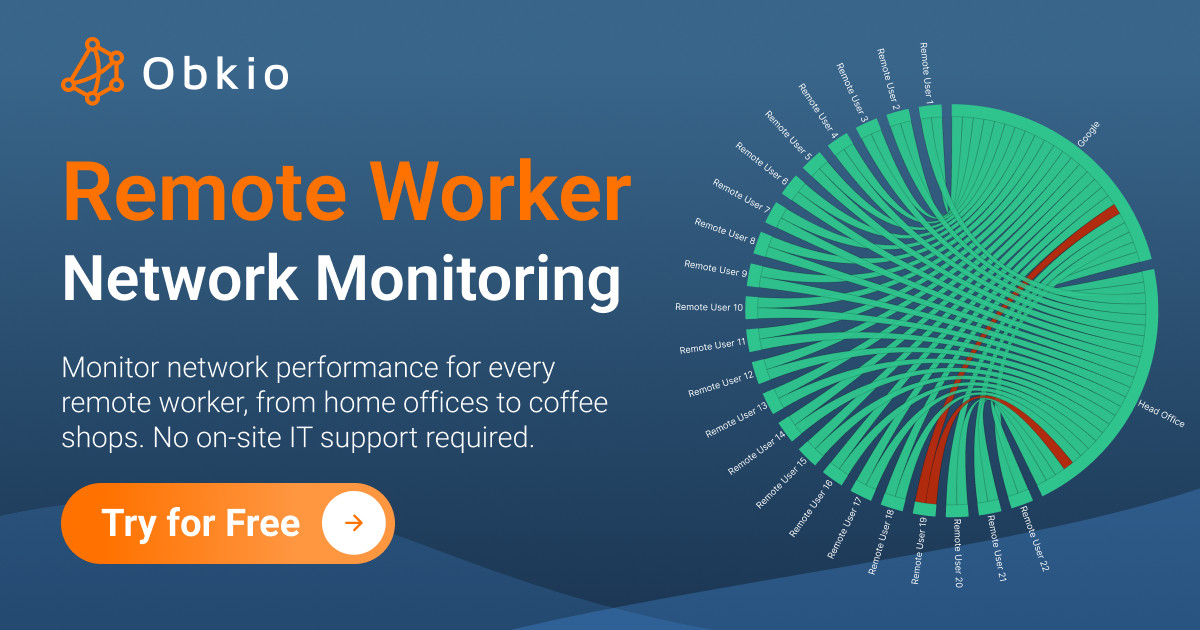













 Obkio Blog
Obkio Blog







